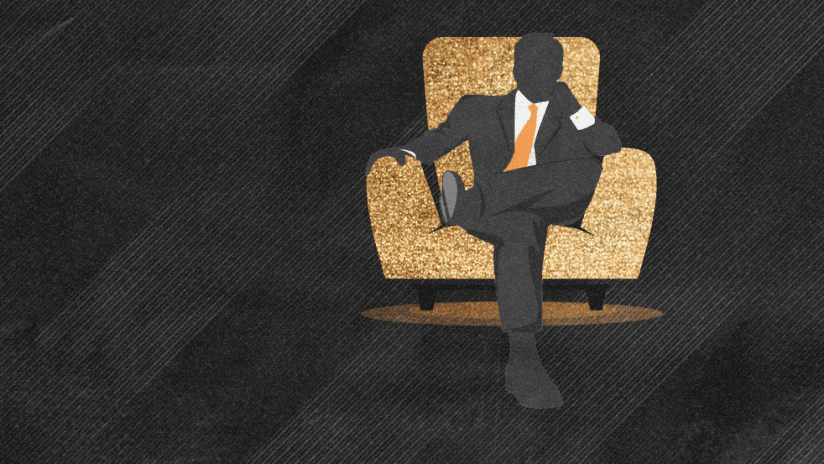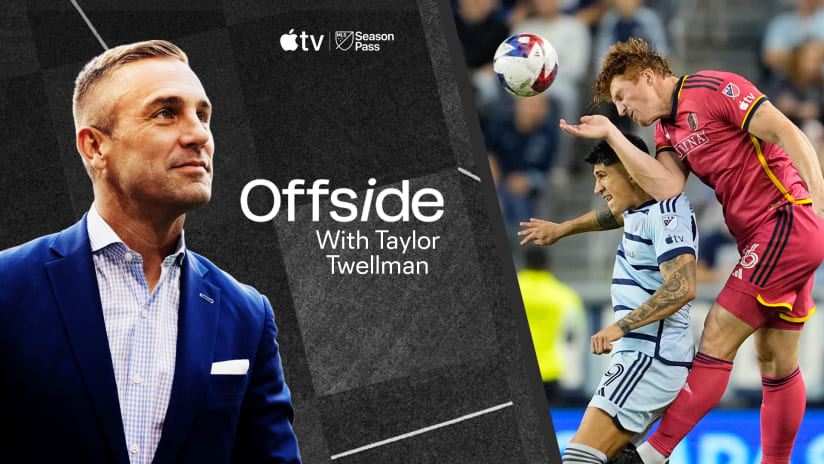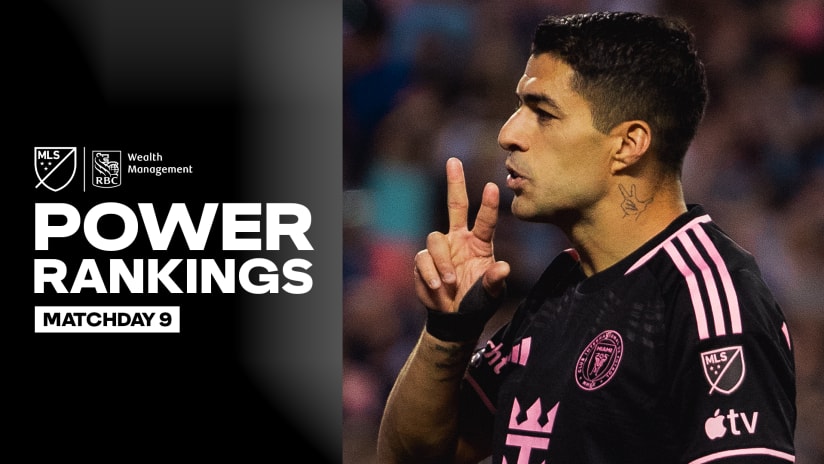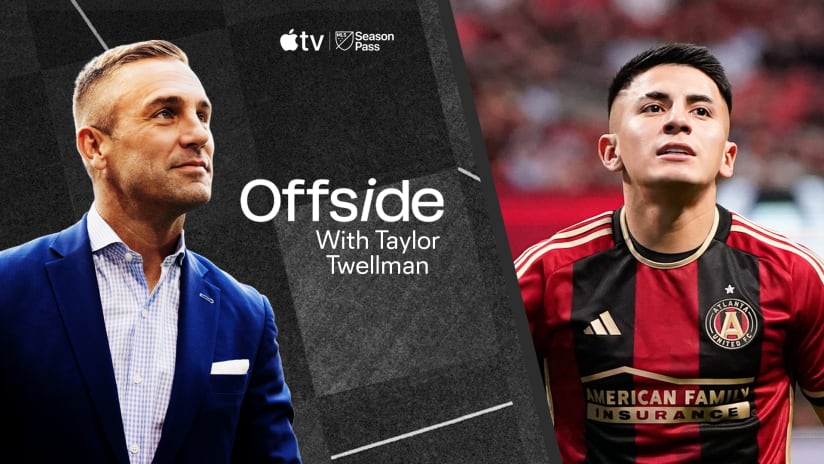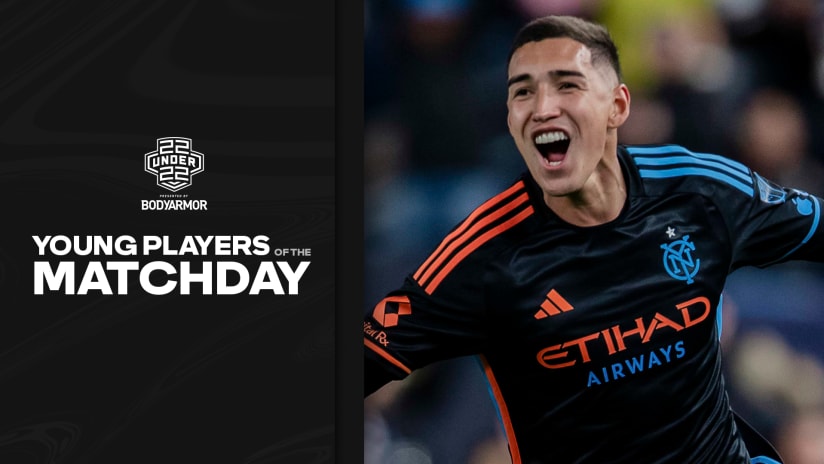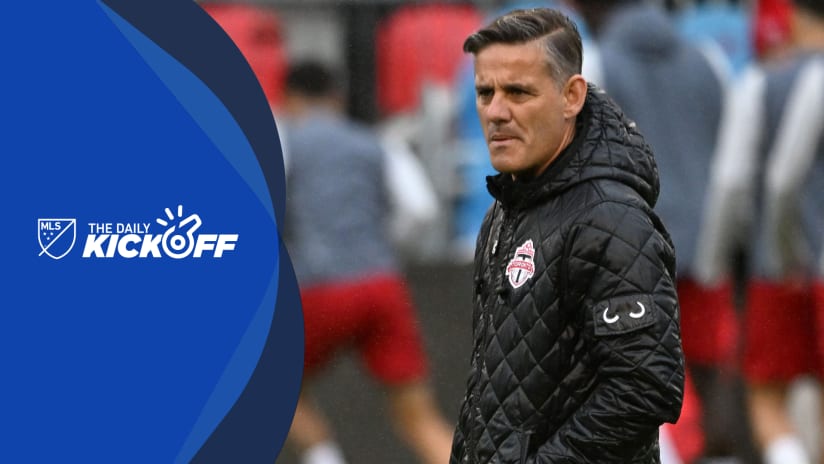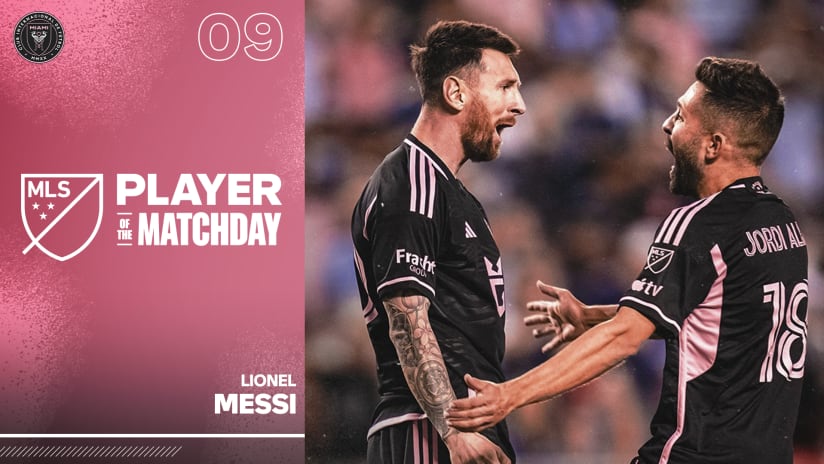Since the world is in a holding pattern, that means our game is in a holding pattern. And obviously that means our national teams are in a holding pattern... which means this is all a very good excuse for a thought exercise, and preferably one focused on the future.
For US fans, the focus has steadfastly been on the future since October of 2017 for obvious and depressing reasons. "In the future we will have more talent, and things will be better" is the very understandable thought that US fans have been dwelling on, and while there's been neither rapid nor linear development, I don't think anyone could in good faith argue that the player pool is not showing signs of being very, very promising.
But that promise will pay off only if players are in advantageous club situations, and are set up to do work both week-to-week and on international dates. More than one career has been derailed by a lack of club playing time during crucial years. Think about the trajectory of Emerson Hyndman, who was excellent in the Championship with Fulham, then pursued a move to a "better" club – Bournemouth in the EPL – and basically lost three years of his career. Now, at 23, he's back in a good club situation, starting for Atlanta United.
To that end, here is the thought exercise: Rating the club situations of the best US prospects, by tier.
Again: this is not the raw quality of the clubs ranked by tier (I am not going to stick my hand into that hornet's nest), but rather the situation of the player at the club – i.e. whether there's a chance to push through and really advance their careers.
Now, here's how I'm defining "best" and "prospect."
Prospect: A player still eligible for the USYNT at some level, but who has not graduated to regular full USMNT appearances. So guys like Christian Pulisic, Tyler Adams, Jackson Yueill and Reggie Cannon (and a bunch of others) are not "prospects" even though all are eligible for the Olympic qualifying squad, and two of them – Yueill and Cannon – were on it. Sergino Dest, Weston McKennie, Cameron Carter-Vickers, Josh Sargent and Tim Weah are also on this list.
None of those guys is a prospect anymore. All of them are blooded, full-time senior-level pros.
Best: Have you been a regular with the US U-23 or U-20 teams over the past 18 months? If so, you're on this list. Have you been a regular with your club team at a better-than-USL level even if you haven't been a regular on those youth national teams (think guys like Frankie Amaya or Christian Cappis)? If so, you're on this list. Guys at a lower level than that – shout-out to the one guy who still has a ton of Matthew Olosunde stock – don't make the cut.
My column, my rules. Let's go:
Tier I: Set Up for Success
These are the guys who you look at and can say that, because of the club culture, their own talent and, for many of them, a growing track-record of delivering at the professional level, you'd probably bet upon them continuing to progress barring unforeseen circumstances (injury, basically). These aren't necessarily the best US prospects at each age group, though you'll find the best U-23 (Paxton Pomykal) and the consensus best U-20 (Giovanni Reyna) in Tier I.
Paxton Pomykal, MF, FC Dallas: No reason to think he won't continue to progress, especially given how strong his now abbreviated start to the season was:
He will be sold to a European club eventually, but given his career path over the past 24 months, there's no need to rush it.
Giovanni Reyna, W, Borussia Dortmund: They love him for obvious reasons. Dortmund are one of the best in the world at development, and Reyna's already shown he can do work at the Bundesliga level.
Miles Robinson, CB, Atlanta United: Best XI at age 22, and playing for a club that already 1) competes for international titles, and 2) has shown the ability and willingness to sell players on to teams on the biggest stage.
Jesus Ferreira, FW, FC Dallas: At 18 he had one of the most productive years for any teenager in MLS history. At 19 he made his full USMNT debut and played well. Ferreira is still a 'tweener in a lot of ways, but Luchi Gonzalez has shown a commitment to getting him on the field and has often gotten the best out of him.
Brenden Aaronson, MF, Philadelphia Union: I thought Aaronson was a nice player last year – smart, technical, decently athletic. I doubted whether he'd be able to impact the game physically on both sides of the ball, though.
We only got to see two games of him, but yeah... my doubts were misplaced. Aaronson is not a Pomykal-level defensive presence, but he was very much a net positive in that epic game against LAFC. He looks like he's taken the leap.
Mark McKenzie, CB, Philadelphia Union: McKenzie had kind of a bummer of a 2019, suffering a concussion in USMNT camp, then appendicitis ahead of the U-20 World Cup (which he was rostered for, but barely played in), and losing his starting job for Philly along the way. But he won the job back by the end of the season, made his full USMNT debut in February of this past year, and was mostly very good in two starts for Philly in 2020.
He's shown talent and strength of character in getting to this point. It's a good spot for him.
Aaron Herrera, RB, Real Salt Lake: The Homegrown is low-key one of the best passing fullbacks in the league, and is almost as comfortable at LB as he is at his more natural RB. He is a write-his-name-in-pen starter, and will be for the foreseeable future.
Bofo Saucedo, W, UNAM Pumas: Bofo had to leave RSL to get the kind of playing time he wanted, and I think it's pretty telling that he ended up at one of the traditional Liga MX giants and has mostly been a starter. The one game he didn't start, he came off the bench and did this:
Bofo might end up being the one that got away for RSL.
Kyle Duncan, RB, New York Red Bulls: It kind of went under the radar that Duncan actually won the starting job outright last year, beating out Michael Murillo down the stretch before a late injury took him back out of the lineup. No reason to think that won't continue to be his job to lose.
Keaton Parks, CM, NYCFC: Parks just couldn't quite break through at Benfica, but made the most of last year's loan to NYCFC and is now permanently in the Bronx as a starter.
Sam Vines, LB, Colorado Rapids: This time last year almost nobody knew who Vines was. Now he's a guy with a USMNT start under his belt, a full-time starting job in Commerce City, and a growing list of plays like this that show he's more than just a defense-minded, replacement-level LB:
Tier II: He'll Get His Chance
These are the guys who still seem to be in the process of earning the job, but are in a position where they're not going to be constantly played out of position, shunted to the bench or overlooked.
Djordje Mihailovic, MF, Chicago Fire FC: 2019 started brightly as Mihailovic scored for the USMNT, but ended up being kind of a lost year at the club level as he was in and out of the lineup for the Fire. To start 2020 he was back in the lineup – though at LW instead of CM – and had delivered two assists in two games under a new, more youth-oriented set-up helmed by head coach Raphael Wicky. And he'd made the Olympic qualifying roster.
It's up to him to keep his spot.
Mauricio Pineda, DM/CB, Chicago: I still think that if the Fire had signed Pineda ahead of last season and put him in at CB they'd have made the playoffs. He's started both games in 2020 at d-mid, but finished the second one at CB. I bet that's his long-term spot, and I wouldn't be at all surprised if he was to Chicago over this coming decade what Matt Besler was to Sporting KC over the past decade.
Gianluca Busio, AM, Sporting KC: He's still just 17 and has 31 MLS appearances, as well as dozens in USL. He's in a good spot – Sporting are invested in him, as in "they want to sell him for millions of dollars soon" – which means he's going to keep playing as long as he keeps looking the part.
Ricardo Pepi, FW, FC Dallas: As a 16-year-old he was one of the leading scores in USL League One. As a 17-year-old, he got his first MLS goal:
Pepi is the best pure striker prospect the US have right now, and has consistently produced at every level. I actually think you could make an argument for him to be one tier higher.
Tanner Tessmann, CM, FC Dallas: A month ago Tessman was an unsigned academy prospect likely headed to Clemson to kick for Dabo Swinney. Now he's a starter who looked extremely comfortable as a deep-lying CM in both of Dallas's games to start the season, even recording an assist on that Pomykal goal above.
I do wonder if, long-term, his upside at CB eventually pushes him to that spot. But whether it's there or at CM, he's getting his chance and is, thus far, taking it.
Brandon Servania, CM/DM, FC Dallas: I still think Servania, who started the season hurt, will end up as a game-conducting No. 6 even though he was more effective last year a little higher up the pitch. Like all the other FC Dallas players on this list, he's going to to keep getting his chances. It's up to him.
James Sands, CM/CB, NYCFC: First Dome Torrent and then Ronny Deila have found various ways to keep Sands on the field, be it at CM or CB. There's nothing eye-catching about his game and I'm still not willing to say what spot is his best long-term position, but it seems that he's going to keep playing. That's good.
Chris Durkin, DM, Sint-Truiden: Durkin was a regular with both D.C. and the US U-20s, but a poor showing at last year's U-20 World Cup and an influx of veterans at DM presented a major bump in the road. So Durkin went on loan to Sint-Truiden in Belgium and has become a starter there:
Hassani Dotson, DM/FB, Minnesota United: Dotson came out of nowhere last year to be a valuable contributor for a playoff team, and looks like he's the heir apparent to Ozzie Alonso as the No. 6 in St. Paul. His versatility and field coverage won him a spot on the Olympic qualifying team.
Danny Leyva, CM/DM, Seattle Sounders: Leyva, who's still just 16, has already played nearly 500 MLS minutes and also has a bunch of USL games under his belt. He is a tidy, lanky, clever, ball-moving CM in the Yueill mold, and he will have to follow Yueill's path of defensive improvement in order to push up the ranks and hit his potential.
Cole Bassett, CM, Colorado Rapids: The 18-year-old is now in his third year in MLS, and has looked the part of a reliable and clever CM, and I expect he'll be a centerpiece for the US U-20s. The fact that he didn't get off the bench in the first two Rapids games of the season is a red flag, but... yeah, he's still just 18.
Jonathan Lewis, W, Colorado Rapids: There's no doubt that when he plays, he delivers, as Lewis has 9g/8a in 1,680 MLS minutes across 3+ years. But Robin Fraser is now the fourth MLS head coach Lewis has had who's decided that the kid is not a full-time starter despite that productivity, and he played just six minutes across the first two games of the season.
He is absolutely getting his chance – the Rapids paid a lot of allocation money for him. He needs to prove it and win the job now.
Frankie Amaya, CM/DM, FC Cincinnati: I'm not going to go so far as to call Amaya "a revelation," but there is a ton to like about a young CM who's both comfortable on the ball in tight spots and miserable to play against. Amaya tortured the Red Bulls in Week 1 and was excellent in Week 2 for Cincy:
I wouldn't be shocked if he ended up being a game-controlling, Kyle Beckerman-esque No. 6, though he's playing in more of a box-to-box destroyer role now (as Beckerman did when he was younger as well, it should be noted).
Brooks Lennon, WB, Atlanta United: Atlanta went out and got Lennon, who has a ton of pace and energy and is a wonderful crosser of the ball, to replace Julian Gressel before they'd even parted with Gressel. That type of targeted acquisition says they know exactly what he brings to the table and exactly how they want to use him, which bodes well for his long-term job security.
Erik Palmer-Brown, CB, Austria Vienna: Like Durkin he had to go on loan to a lower-level league, and is actually on loan from Manchester City, but Palmer-Brown's (finally) come into his own as a starting CB for the Violets after a very stop-start past six years of development at six previous clubs.
He was one of the three CBs to make the Olympic qualifying roster.
Aboubacar Keita, CB, Columbus Crew SC: The 19-year-old Homegrown became a starter down the stretch last year and acquitted himself well:
He's started one of two games in 2020. Third on the CB depth chart for an MLS Cup dark horse is not a bad spot to be in at this stage of his career.
Matt Real, LB, Philadelphia Union: Another one off the Union Homegrown assembly line, Real stepped into the LB job in the absence of the injured Kai Wagner in the season's first two games and the 20-year-old was largely very, very good. He'll get his chance to keep earning minutes, as it's the Union way.
Matt Freese, GK, Philadelphia Union: The 21-year-old started five games in Andre Blake's absence last year, and was part of the Olympic qualifying roster.
JT Marcinkowski, GK, San Jose Earthquakes: The 22-year-old has five MLS games under his belt, has played a bunch for Reno in the USL and was part of the Olympic qualifying roster.
David Ochoa, GK, RSL: The 19-year-old has yet to make his MLS debut, but like Freese and Marcinkowski he made the Olympic qualifying roster, and was my pick to actually win the No. 1 shirt. As an 18-year-old he backstopped Real Monarchs to the USL Championship championship (yes, I did that on purpose).
Richie Ledezma, AM, PSV Eindhoven: Ledezma is maybe my favorite pure attacking talent in the entire pool. Here's 10 minutes worth of highlights for Jong PSV from this season:
Ledezma still has to get stronger, more physical and better defensively – he knows this and says as much when asked about it – but the fact that PSV just extended his contract says they're betting on him to make the leap.
I was hoping his first-team breakthrough would come this winter, but even without it he was named to the Olympic qualifying roster.
Julian Araujo, RB, LA Galaxy: I almost moved Araujo down a tier because Guillermo Barros Schelotto just loves for his team to cross the ball, and incumbent RB Rolf Feltscher is, if nothing else, a very, very good crosser of the ball. That's a roadblock for Araujo.
That said, he's an 18-year-old who has almost 1,000 MLS minutes across all competitions and a clear path to playing time. He'll get his chance.
Bryce Duke, CM, LAFC: Duke kind of came out of nowhere this offseason. The Homegrown rights to the former RSL and Barca Residency CM were acquired by LAFC in January, and by February he was playing meaningful minutes in Concacaf Champions League. Bob Bradley's always been a #PlayYourKids guy, and Duke's the latest to benefit from that.
Johnny Cardoso, CM/DM, Internacional: The 18-year-old from New Jersey has been getting regular minutes for one of Brazil's biggest club in the Copa Libertadores, and is doing so for one of my favorite managers in the world today in Eduardo Coudet.
Robbie Robinson, FW, Inter Miami: He started each of his team's first two games and had the secondary assist on the first-ever Inter Miami goal, and was absolutely tormenting that D.C. United backline before coming off just before halftime with an injury:
Even if Inter go out and get a big-name No. 9, Robinson's going to get on the field. And I think when he does, he'll produce.
Justin Rennicks, FW/W, New England Revolution: I love Rennicks, whose engine never quits and who might end up being more of a Latif Blessing-style destroying No. 10 rather than a forward or a winger. But he's got to finish his chances when he gets out there – especially since he's playing for a coach who usually doesn't go out of his way to get younger players onto the field.
Henry Kessler, CB, New England: That said, when Bruce finds a young center back he likes, that kid plays. It happened 24 years ago with Eddie Pope in D.C., and it happened 11 years ago with Omar Gonzalez in LA, and now it's happening for Kessler in Foxborough. Two games, two starts, and a bunch of evidence that he'll keep that job for a long, long while.
DeJuan Jones, FB, New England: Another younger player who progressed well under Arena last year, Jones has converted to LB from his natural wing spot in college. He mostly plays inverted on the left, and when he gets forward is an absolute bolt of lightning.
Patrick Seagrist, LB, RBNY: He's struggled defending on the back foot in his two starts this year, but so has everyone else on the Red Bulls. Getting two starts and four points in your first two professional games out of college for a team with a long-standing commitment to developing draft picks, though? Can't ask for a better landing spot.
Dylan Nealis, RB, Inter Miami: Didn't appear in Miami's first game of the year, but then the No. 3 overall SuperDraft pick slotted in and looked like a natural at right wingback in their second game. I think he'll keep that spot.
Tier III: Might Need to Move
Young players have to win jobs. That's just a fact of life in the game.
But when you're at one of the five best clubs in the world, winning the job is harder in the first place. Or when you win the job one year, and then the next year your team brings in two veterans ahead of you, the writing is on the wall. Here's the list:
Chris Richards, CB, Bayern Munich: I love Richards and wouldn't be at all shocked if he became a Bayern-level CB eventually. But it doesn't look like it's going to be through Bayern's youth ranks, where he's made little progress over the past year and is now, a week from his 20th birthday, no longer a young prospect.
He's got to play at a higher level than the German third tier if he's going to make it, and the clock is ticking.
Justen Glad, CB, RSL: It doesn't seem to matter that RSL's goals allowed per game are significantly lower with Glad on the pitch rather than off it over the past four years, or that their points per game are higher when he's playing than when he sits. What matters is that first Mike Petke and then Freddy Juarez decided to go with other options in the biggest games, and now, at age 23, Glad has lost his starting job.
Yes, he made the Olympic qualifying team, but the writing's on the wall.
Jeremy Ebobisse, FW, Portland Timbers: Same goes for Ebobisse, who won the starting No. 9 job late in 2018 and was a major part of that team's push to an MLS Cup appearance, then lost the job early last year when the Timbers went out and got a winger to play at center forward instead. Ebobisse still kept a starting spot and was productive – he scored 12 times across all competitions last year – but most of those appearances came on the wing.
Now in 2020 he's no longer a starter at either center forward or on the wing, and the Timbers spent millions to bring in other attackers ahead of him at each spot. Like Glad, he made the Olympic qualifying roster.
Mason Toye, FW, Minnesota United: Toye's in a similar spot to Ebobisse, having won the starting center forward job last year but then seeing his side bring in two veterans to play over him in 2020. He didn't get off the bench in either of the first two games and did not make the Olympic qualifying roster.
Alex Mendez, AM, Ajax: Mendez really does have the sweetest left foot in the pool and real inventiveness when he find the ball:
But when he's not finding the ball he's a statue, and even his biggest fans aren't surprised he didn't make the Olympic qualifying roster. Other, younger players at his spot have blown past him in the pecking order at Ajax for a reason.
Chris Gloster, LB, PSV Eindhoven: Gloster's had an up-and-down year for PSV at several spots, playing LB, LWB and even some left wing. I'm still not sure what his best position will be, but I am skeptical about his ability to play any of those roles at a high enough level to break into the PSV first team.
He made the Olympic qualifying roster, though likely only because Colorado refused to release Vines.
Edwin Cerrillo, DM, FC Dallas: His pro career got off to a hot start as he unexpectedly won the starting DM job last year, but then he went away for the U-20 World Cup and came back a different, less effective player. Cerrillo played only once in the entire second half of last season for Dallas – a 4-0 loss to Chicago – and has yet to debut in 2020 while Tessmann has shot up the ranks ahead of him and the Dallas front office went out and spent seven figures on veteran d-mid Thiago Santos.
Dallas have moved on from their own youth prospects before, selling Alex Zendejas to Chivas de Guadalajara, and trading both Kellyn Acosta and Victor Ulloa within the league.
Uly Llanez, W, VfL Wolfsburg: Llanez was excellent as a super-sub in last year's U-20 World Cup, has been tearing it up for the Wolsburg U-19s (his numbers are better than Reyna's), and scored in his USMNT debut last month:
However, Wolfsburg's history of promoting their own talent from within is simply awful, and the fact that they were willing to let him go for a month in January (USMNT camp) and then again for nearly a month in March (Olympic qualifying) says they were in no rush to get him to the first team.
Maybe that changes for next season. But a club's culture with this sort of thing tends not to be that flexible, so I would expect a loan (and am, quite frankly, hoping for an outright sale to a different Bundesliga side).
Konrad de la Fuente, W/CM, Barcelona B: The 18-year-old is very good! He's just not going to be good enough to push through the system and into the Barca first team – basically nobody is, these days.
ESPN reported that de la Fuente was signing a new contract with Barca at the start of February, one which would keep him there, and playing with Barca B, until 2022. No official word came on that contract, and at this point I suspect he'd be better off playing for a club that truly intended to progress him up to the first team. But maybe that's just the cynic in me.
Tier IV: New Home Imminent
Soon.
Sebastian Soto, FW, Hannover 96: The goal-scoring hero of last year's U-20 World Cup actually made three Bundesliga appearances at the end of last year, and looked like he'd be a big part of the team's future as they dropped down to the 2. Bundesliga for 2019/20. But after a contentious summer reportedly around a failed move to PSV and Hannover's inflexibility with regard to salary, Soto's been almost completely sidelined this year. He's played just twice for the first team, just three times in the Regionalliga, and is going to have a new address as soon as his contract is over.
Christian Cappis, CM, Hobro: Cappis has done well in Denmark, but Hobro's a selling club in a selling league. Neither he, nor anyone at the club nor anyone with U.S. Soccer has made any secret of the fact that they'd like to see him progressing to a higher level.
Emmanuel Sabbi, W, Hobro: Sabbi agreed to a pre-contract with Odense, a bigger club in the Danish league, when his contract expires at the end of June. I'll admit it's not the move I expected – I thought he'd end up in Belgium, the Netherlands or the 2. Bundesliga.
Jonathan Amon, W, Nordsjaelland: Amon's played just 36 minutes across an injury-marred season, and basically missed all of 2019. He was awesome in 2018, though:
At this point, though, it's not clear whether he'll get back to fitness, let alone get back to that level. I honestly thought he was the best non-Pulisic US winger in this age-group 18 months ago, but that's a long, long time.


